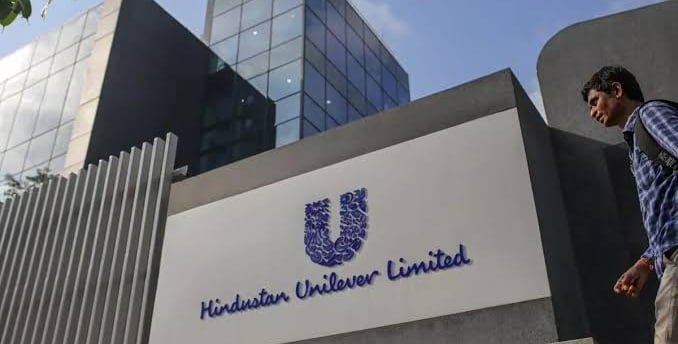Add your promotional text...
Should HUL Investors Be Concerned? Analyzing a Decade of Growth and Future Prospects
SYNOPSIS:- This blog examines Hindustan Unilever's (HUL) remarkable turnaround over the past decade, highlighting key strategies in product innovation, distribution, and technology that fueled its growth. As the company faces new challenges, including inflation and competition, we explore whether HUL remains a solid investment and how it plans to sustain its momentum in the coming years.
EDITORIAL
By Divyanshu Pandey
5/30/20243 min read


A decade ago, in May 2014, Hindustan Unilever (HUL) held its annual analyst meeting. Harish Manwani, then CEO of HUL, entered the ballroom at the Taj Colaba with a confident smile.
Manwani had every reason to be optimistic. After a challenging decade in the 2000s, HUL had regained its momentum. Between 2009 and 2014, HUL’s revenue grew by 58% and its profits by 75%. The company had once again positioned itself as a key player in India’s consumer-driven growth.
This turnaround was no small feat.
Hindustan Unilever’s Performance Recovery
In the early 2000s, HUL experienced what many termed as a “lost decade,” where its sales and profits remained stagnant. Reversing this trend and achieving consistent growth was a significant challenge.
In May 2013, Unilever announced a buyback to increase its stake in HUL. This move was aimed at boosting product innovation, expanding distribution, and becoming more agile in the face of competition from new-age, tech-enabled FMCG companies.
Over the following decade, HUL focused heavily on execution. Its “Winning in Many Indias” strategy led to 1.5 times growth in select rural markets compared to base growth rates. The company also emphasized premiumization, particularly in categories like detergents and tea, driving substantial growth even in well-penetrated segments.
HUL’s stringent cost-saving measures resulted in higher operating leverage. However, the true differentiator was HUL’s extensive distribution network, which directly reached 3 million outlets, with an additional 2.3 million covered by its extended network. Rural areas were managed by Shakti Entrepreneurs.
Embracing Data Analytics and Technology
Recognizing the wealth of data it had accumulated over the years, HUL launched “Project Livewire” to analyze trade promotions, media spending, and competitive dynamics. This project eventually led to the development of the Shikhar app, which now allows 800,000 retailers to place orders online, giving HUL real-time insights into demand fluctuations.
During the Covid-19 pandemic, the sale of Lifebuoy hand sanitizers showcased the impact of these data-driven insights.
Since late 2019, HUL has operated a highly automated, rapid dispatch center called Samadhan near Chennai. This facility uses advanced technology to efficiently process and dispatch orders, enhancing the company’s supply chain capabilities.
Strategic Focus on D2C and AI
HUL has also ventured into the direct-to-consumer (D2C) market to compete with new-age FMCG brands. This shift was part of a broader global push from Unilever, which saw e-commerce surge during the pandemic. Acquisitions like Dollar Shave Club have provided HUL valuable insights into D2C operations.
Artificial intelligence (AI) has become another focus area for HUL, with AI labs in Mumbai, Bengaluru, and Gurugram. These labs analyze consumer search data and trade information, helping HUL stay competitive in segments like organic shampoos, which are dominated by new brands like Mamaearth.
Financial Performance and Margins
From 2014 to 2024, HUL improved its operating margins from 16% to 24%. This was during a period of subdued food and commodity prices. However, the company Is now facing rising inflation, which could impact its margins.
In recent quarters, HUL has avoided price hikes. Instead, it has reduced grammage in some markets and withdrawn from low-unit price points in others.
Despite these challenges, HUL has maintained an annual growth rate of around 10% in sales and profits over the past decade and remains confident in its ability to sustain double-digit growth. The company aims to match its peers like Godrej Consumer and P&G in operating margins, which are around 26%.
Comparing Valuations: HUL vs. Unilever
A significant issue regarding HUL’s valuation is its comparison with its parent company, Unilever. HUL currently trades at around 50 times earnings, lower than its 10-year average of 62 times. In contrast, Unilever Plc trades at around 20 times earnings.
The higher multiple for HUL is due to its stronger growth prospects. Innovations in product development, supply chain management, and the use of technologies like AI are expected to keep HUL ahead of the competition.
Investors should note that buying HUL stock at attractive valuations can yield substantial long-term returns. Despite the challenges of the 2000s, HUL stock delivered a compounded return of 12.7% from 2000 to 2024.
The Future Outlook
While the next decade may present challenges, particularly if inflation pressures margins, investing in HUL during downturns could prove profitable.
HUL’s focus on innovation, strategic execution, and leveraging technology positions it well for future growth. Investors should keep a close eye on the company’s ability to navigate inflationary pressures and maintain its growth trajectory.
